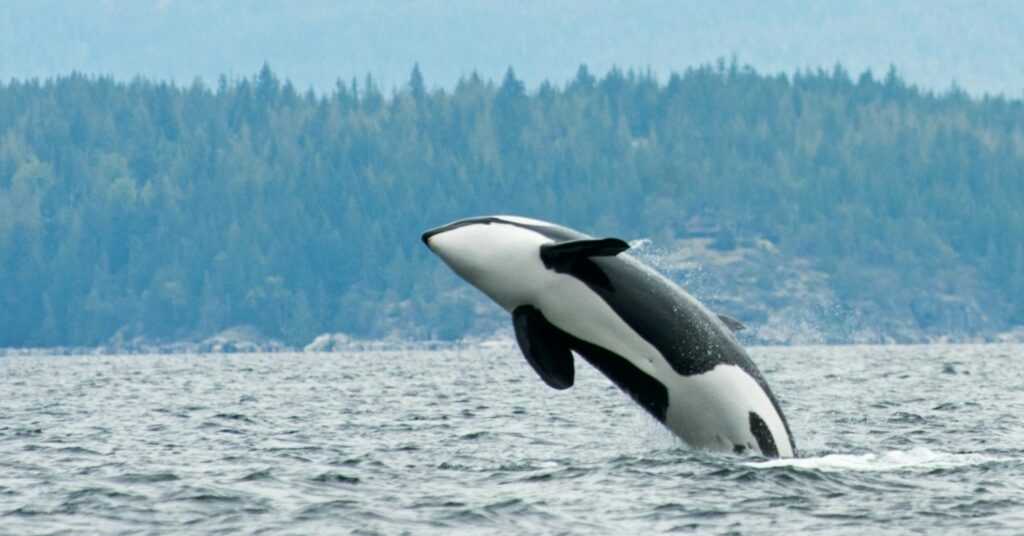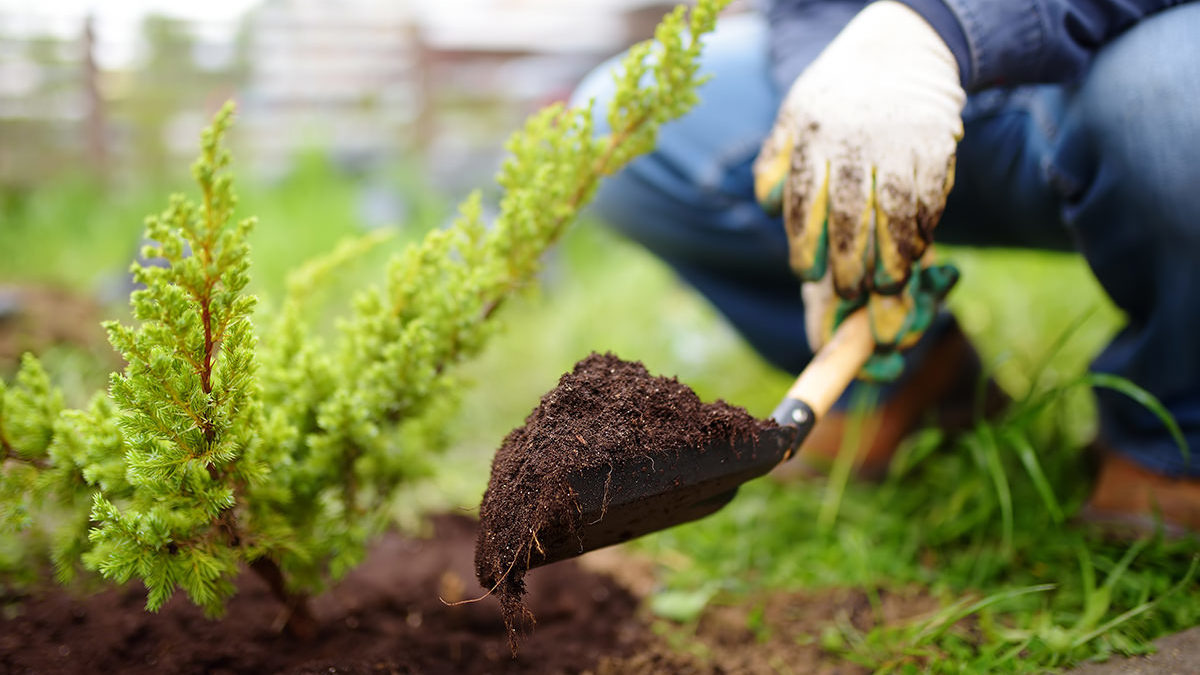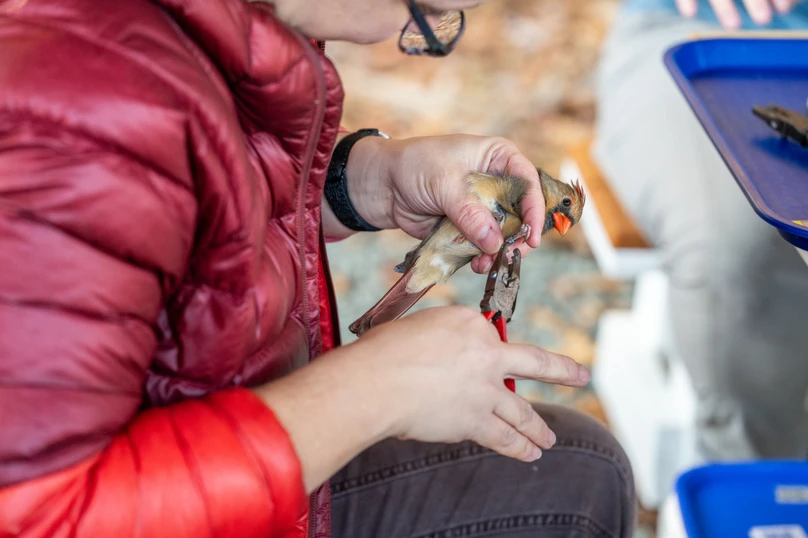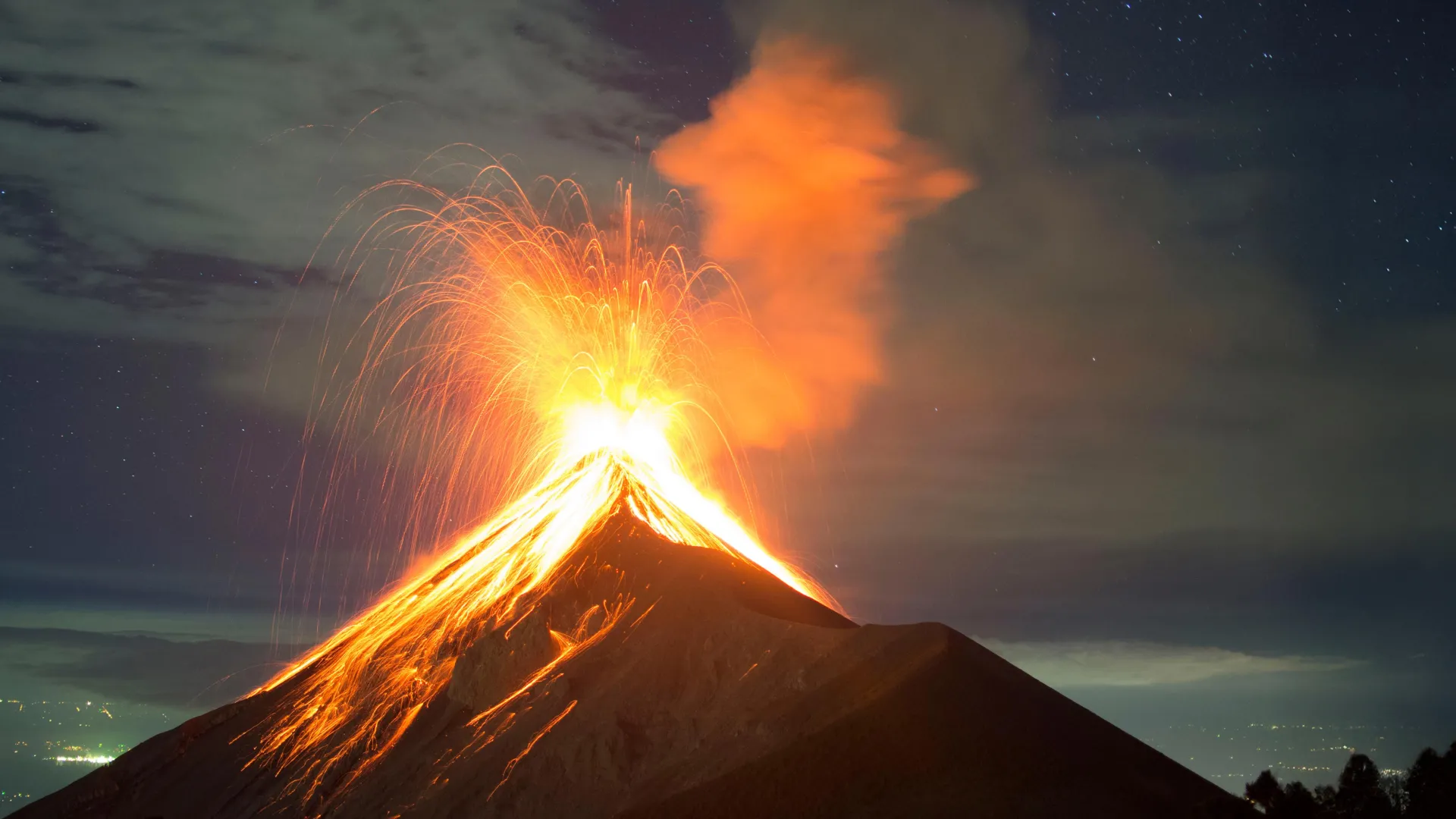PROTECT YOUR DNA WITH QUANTUM TECHNOLOGY
Orgo-Life the new way to the future Advertising by Adpathway Martin Sanchez listens to what the trees are saying. (Tanvi Dutta Gupta)
Martin Sanchez listens to what the trees are saying. (Tanvi Dutta Gupta)Under the tall sweep of the redwoods, the trail disappears beneath conifer needles. It feels much farther than a mere half-hour’s hike from a parking lot. Martin Sanchez lays a palm on a grizzled trunk. I begin to ask him a question, but he raises his hand. “Wait, do you hear that?” A junco calls. A stream murmurs below. Then another sound registers: a plane, roaring far overhead. My brain, so used to a city’s noise, had ignored it.
But Sanchez heard it. So would his microphone. Sanchez has brought me here in search of a refuge from human noise. In its place, we hear the natural world speak. Then he can record it. That’s his job.
More and more people tune into calming natural soundscapes—to meditate, to focus, or to fall asleep. But often those sounds are drawn from a limited set of online libraries, which get repetitive. Companies making mental health tools, filmmakers, and others all want fresh new sounds. Sanchez—who runs an audio production company, Seismic Sounds—collects them.
About once a month, he hikes or bikes out to places like Muir Woods, laden with audio equipment, to record Bay Area nature, uninterrupted. His work is inspired by ecologists, especially Bernie Krause, documenting how human noises shift nature’s music: birdsong deepens, frogs croak for longer. And especially as climate change upends nature, “I want to hear what’s really out there,” says Sanchez.
Each trip takes time—and planning. Sanchez memorizes flight patterns and scans maps for trails in remote valleys. On the trails, he walks, watches, and listens for hours. A good soundscape has some birdsong, but too much distracts; the wind blows but doesn’t gust. Sanchez searches for places where vegetation conspires to help him: a dense canopy, for example, “funnel[s] everything to where we’re at,” Sanchez says.
At Muir Woods, in a tree by the trail, a crevice shelters his equipment: a recorder that registers three times the sonic range of the human ear, wearing a furry muffler (called a dead cat) that cuts out the wind noise; a stabilizer that helps balance out sonic extremes. Today, he’s also testing out a new piece of equipment that can pick up the vibration of the tree itself. Sanchez hits record. Headphones magnify the sounds around me: a woodpecker taps in the distance. The leaves rustle overhead. Beneath it all, the tree’s low rumble.
Then we walk away. Our breathing would mar the recording.
Very few soundscape engineers focus on nature, so there’s no well-worn track to this vocation. Sanchez has an audio engineering degree, but he learned most by doing: checking levels in jazz clubs and soundtracking indie films. You can start recording with your phone, Sanchez says, or a cheap microphone. More expensive equipment accumulates over time, project by project. Work tends to be freelance. One client leads to another. “The audio community is very small, but they take care of each other,” Sanchez says.
Sanchez, an East Bay native, is building a library of high-quality recordings of Bay Area nature: waterfalls at Point Reyes, whales from the Monterey Canyon. Some sounds he licenses out, say to healthcare companies; others, he hopes to post on YouTube so anyone can hear them. If today’s recordings turn out well, they will teleport some future listener right into the crevice in the redwood tree. If that listener is someone who can’t make the hike—Muir Woods can come to them. “There’s a reason silent films haven’t stuck around, but radio has,” Sanchez says. “It’s taking you to that moment in time that’s not going to happen again.”
Getting started
Job: Field recordist.
Pay range: Wide. Soundscapes in online libraries may fetch $300 per license; commissions may range from $500 to $5,000—but beginners often work for free.
Requirements: A good ear, a strong back (to lug equipment into the wild), general ruggedness.
Training: Formal schooling in audio engineering helps, but you learn most on the job. Ask for help.
 With a piece of equipment called a geophone, which records the vibrations in solid objects, we listened to the redwood tree grumble: was that low sound thousands of gallons of sap in motion, its lifeblood thrumming? (Tanvi Dutta Gupta)
With a piece of equipment called a geophone, which records the vibrations in solid objects, we listened to the redwood tree grumble: was that low sound thousands of gallons of sap in motion, its lifeblood thrumming? (Tanvi Dutta Gupta)

 4 weeks ago
43
4 weeks ago
43





















 English (US) ·
English (US) ·  French (CA) ·
French (CA) ·